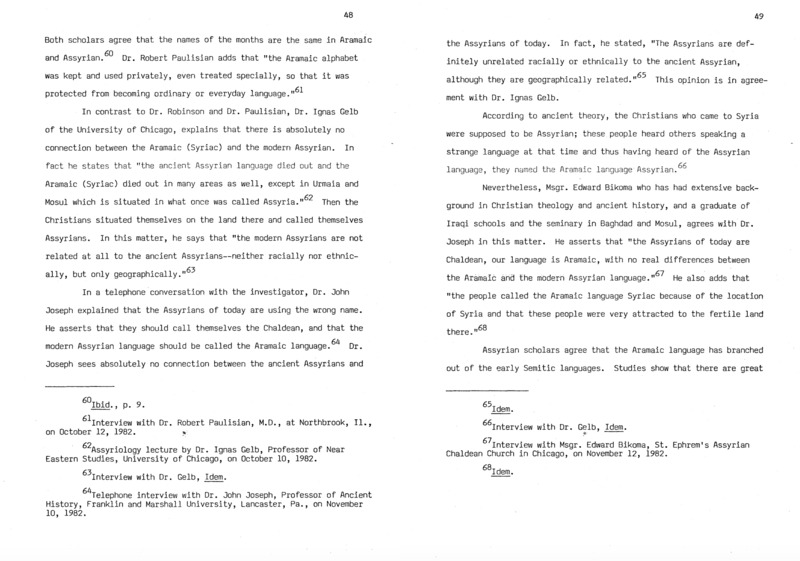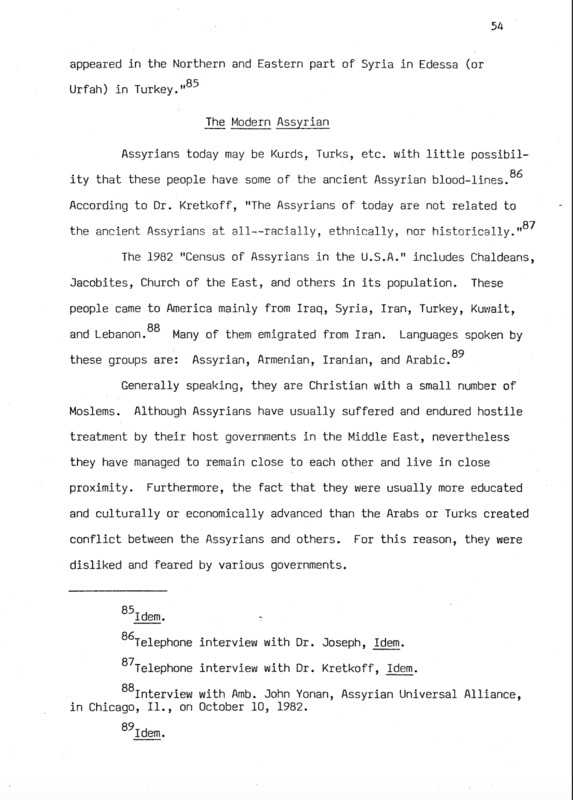-
Title
-
Assyrian Ethnicity in Chicago
-
Creator
-
May Abraham
-
Date
-
1984
-
Description
-
“Assyrians today may be Kurds, Turks, etc., with little possibility that these people have some of the ancient Assyrian blood-lines.”
“The Assyrians of today are not related to the ancient Assyrians at all—racially, ethnically, nor historically.” (cited by May Abraham from Dr. Kretkoff)
According to May Abraham’s pages (drawing on Ignace Gelb and John Joseph), the ancient Assyrian language had died out while the communities in question spoke Aramaic/Syriac; Joseph argues that today’s “Assyrians” are using the wrong name, should call themselves Chaldeans, and that what is called modern Assyrian should be called Aramaic. In this framing, “Assyrian” in the U.S. context functioned as an umbrella category that grouped Chaldeans, Jacobites, and members of the Church of the East from Iraq, Syria, Iran, Turkey, Kuwait, and Lebanon, who also used multiple everyday languages. Abraham underscores the point with two explicit claims from the text: “Assyrians today may be Kurds, Turks, etc., with little possibility that these people have some of the ancient Assyrian blood-lines,” and “The Assyrians of today are not related to the ancient Assyrians at all—racially, ethnically, nor historically” (cited by May Abraham from Dr. Kretkoff). Taken together, these statements present “Assyrian” as a modern, label-driven umbrella rather than a biologically or historically continuous identity from antiquity.
-
Language
-
English
-
Publisher
-
Assyrian Ethnicity in Chicago, May Abraham, p. 48–49, 54.
-
ecommons.luc.edu
-
Contributor
-
https://ecommons.luc.edu/cgi/viewcontent.cgi?article=3245&context=luc_diss




